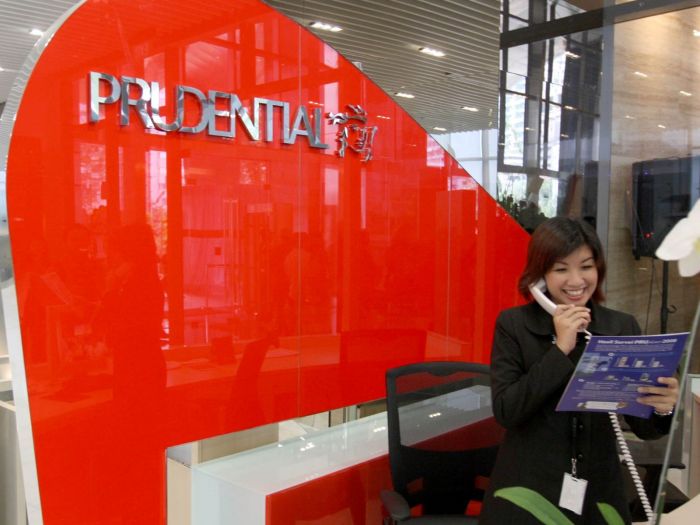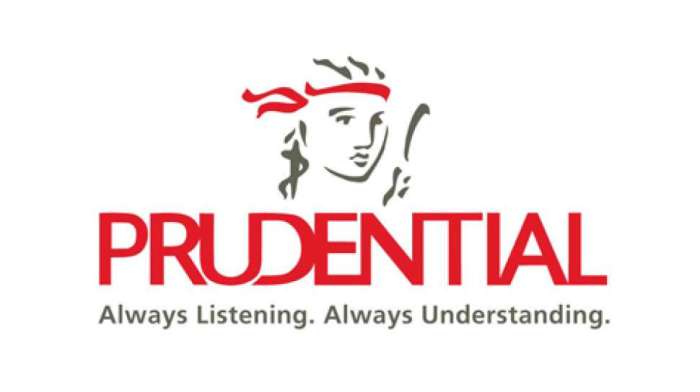Navigating the complexities of dental insurance can feel like traversing a minefield. This deep dive into Prudential dental insurance providers aims to illuminate the often-murky waters of coverage, costs, and network access. We’ll dissect plan options, compare Prudential to its rivals, and equip you with the knowledge to make informed decisions about your oral health care.
From understanding the nuances of different plan levels and their associated premiums to deciphering the fine print on exclusions and limitations, this analysis provides a comprehensive overview. We’ll explore customer experiences, examine the breadth of Prudential’s provider network, and offer insights into future trends shaping the dental insurance landscape.
Ultimately, our goal is to empower you to choose the dental plan that best fits your needs and budget.
Defining Prudential Dental Insurance

Prudential, a prominent name in the financial services industry, offers a range of dental insurance plans designed to help individuals and families manage the costs associated with dental care. These plans, offered through various partnerships and networks, provide coverage for a variety of dental services, aiming to make preventative and restorative care more accessible.
Understanding the specifics of Prudential dental insurance requires examining the different coverage options and plan levels available.Prudential dental insurance plans typically cover a spectrum of dental services, including preventative care such as routine checkups, cleanings, and x-rays. Many plans also offer coverage for basic restorative treatments like fillings and extractions.
More comprehensive plans may extend coverage to more extensive procedures such as root canals, crowns, bridges, and even orthodontics, although the extent of coverage for these services often varies depending on the specific plan chosen. It’s crucial to carefully review the plan’s details to understand exactly what is covered and to what extent.
Types of Coverage Offered by Prudential Dental Plans
Prudential dental plans generally fall into several categories reflecting different levels of coverage and cost. These categories are not standardized across all Prudential offerings and may vary based on the specific plan and the provider network. However, common types include preventative care plans, basic restorative plans, and comprehensive plans.
Preventative plans emphasize routine checkups and cleanings, while basic restorative plans add coverage for fillings and extractions. Comprehensive plans encompass a broader range of services, including major restorative procedures and potentially orthodontics. The specific services covered under each category are Artikeld in the plan’s benefit booklet.
Levels of Prudential Dental Insurance Plans
The specific levels or tiers of Prudential dental insurance plans can vary considerably depending on factors such as the employer sponsoring the plan, the geographic location, and the specific needs of the insured population. Generally, plans are structured to offer varying degrees of coverage in exchange for differing premium costs.
A lower-cost plan might have higher out-of-pocket expenses and lower coverage maximums, while a higher-cost plan may offer more extensive coverage and lower out-of-pocket expenses. Consumers should carefully compare the costs and benefits of different plans to determine the best fit for their individual circumstances and budget.
For example, a family with young children might opt for a plan with more comprehensive orthodontic coverage, while an individual without children might prioritize a plan with lower premiums. Understanding the specific details of each plan’s coverage limits, deductibles, and co-pays is crucial for informed decision-making.
Provider Network Analysis
Prudential’s dental provider network is a critical component of its insurance offerings, impacting both the accessibility and cost-effectiveness of dental care for its policyholders. A thorough analysis of its network characteristics, size, and geographic reach, compared to competitors, is essential for understanding its overall value proposition.Prudential’s dental network comprises a diverse range of dentists, specialists, and dental facilities.
Key characteristics include participation agreements that dictate reimbursement rates and service standards. The network’s structure often prioritizes contracted providers who agree to specific fee schedules, leading to lower out-of-pocket costs for insured individuals. However, the size and geographic distribution can significantly influence access to care, especially in underserved areas.
Network Size and Geographic Reach
The size of Prudential’s dental provider network varies regionally and is not publicly disclosed in a single, comprehensive figure. Direct comparison with competitors like Delta Dental or MetLife, who also boast extensive networks, requires analyzing publicly available data on provider counts per state or region.
Generally, larger national insurers tend to have broader networks, providing greater choice and convenience to policyholders, but this can also translate to higher administrative costs. A smaller, more regionally focused network might offer more competitive pricing but less geographic flexibility.
Access to reliable, publicly available data that allows for a direct, comprehensive comparison between Prudential and its main competitors is limited. Future research focusing on publicly accessible data from state insurance departments or market research reports would be beneficial.
Locating In-Network Dentists
Prudential offers several resources to help policyholders find in-network dentists. These typically include an online search tool on their website, allowing users to search by location, specialty, and other criteria. The website often integrates with mapping services to display provider locations visually.
In addition, Prudential’s customer service representatives can provide assistance in locating nearby dentists within the network. The user-friendliness and comprehensiveness of these tools are crucial factors in determining the overall accessibility of the network. For example, a robust online search tool with detailed provider profiles and patient reviews could enhance user experience and satisfaction.
Conversely, a less intuitive or incomplete search function could hinder the process and negatively impact policyholder experience.
Plan Costs and Benefits

Prudential offers a range of dental insurance plans, each with varying premiums, deductibles, and annual maximums. Understanding these cost and benefit structures is crucial for selecting a plan that aligns with individual needs and budgets. The following details provide a comparative overview to aid in this decision-making process.
Note that specific plan details and pricing are subject to change and may vary by location and individual circumstances. Always consult the most current plan documents for the most accurate information.
Prudential Dental Plan Comparison
The table below compares premium costs, deductibles, and annual maximums for three hypothetical Prudential dental plans – a basic plan, a mid-range plan, and a premium plan. These are illustrative examples and may not represent all plans offered by Prudential.
Actual plans and costs will vary.
| Plan Type | Monthly Premium (Estimate) | Annual Deductible | Annual Maximum Benefit |
|---|---|---|---|
| Basic | $30 | $50 | $1,000 |
| Mid-Range | $50 | $25 | $1,500 |
| Premium | $80 | $0 | $2,000 |
Covered Dental Procedures
The specific dental procedures covered under each Prudential dental plan vary. Generally, basic plans cover essential services like preventative care (cleanings and exams), while mid-range and premium plans expand coverage to include more extensive procedures. Below are examples of common covered services, though specific inclusions are dependent on the selected plan.
Basic Plan:Typically covers routine cleanings, examinations, and possibly basic fillings. More extensive procedures like orthodontics or implants are usually not covered or have limited coverage.
Mid-Range Plan:Expands coverage to include more restorative procedures such as fillings, crowns, and possibly root canals. May offer some coverage for orthodontics, but with limitations.
Premium Plan:Provides the broadest coverage, encompassing a wider array of procedures, including major restorative work, orthodontics, and potentially implants. Deductibles and co-pays are often lower or nonexistent.
Filing a Claim with Prudential Dental Insurance
The process for filing a claim typically involves submitting a claim form along with supporting documentation, such as receipts from the dental provider. Prudential may offer online claim submission options for increased convenience. Claim processing times can vary.
Policyholders should refer to their specific plan documents for detailed instructions and contact information for any claim-related inquiries. The claim process usually involves submitting the necessary paperwork to Prudential, either electronically or via mail. Prudential then reviews the claim and processes payment to the provider, or directly to the insured depending on the plan’s reimbursement method.
In some cases, pre-authorization may be required for certain procedures.
Customer Reviews and Ratings

Prudential dental insurance, like any insurance product, receives a diverse range of customer feedback reflecting varying experiences with plan benefits, claims processing, and customer service interactions. Analyzing online reviews and ratings from sources such as the Better Business Bureau, independent review sites, and social media platforms provides valuable insights into customer satisfaction levels.
This analysis categorizes feedback and identifies common themes to offer a comprehensive overview of customer sentiment.
Claims Processing Experiences
Claims processing efficiency is a critical factor influencing customer satisfaction with dental insurance. Reviews frequently highlight the speed and simplicity of the claims submission process, with some praising the online portal’s user-friendliness and the availability of mobile apps for convenient claim tracking.
Conversely, negative reviews often cite lengthy processing times, difficulties in obtaining reimbursements, and confusing claim forms as significant pain points. For example, one common complaint involves delays in receiving payment after submitting a claim, particularly for complex procedures requiring multiple authorizations.
Another recurring issue is the lack of clear communication regarding claim status updates, leaving customers feeling uncertain about the progress of their reimbursements.
Customer Service Interactions
The quality of customer service plays a substantial role in shaping overall customer satisfaction. Positive reviews frequently commend the helpfulness, responsiveness, and professionalism of Prudential’s customer service representatives. Many customers appreciate the readily available support channels, including phone, email, and online chat, allowing for convenient access to assistance.
However, negative feedback often focuses on difficulties in reaching customer service representatives, long wait times, and unhelpful or dismissive interactions. Some customers report feeling frustrated by their inability to resolve issues promptly or obtain clear answers to their questions.
A specific example of negative feedback involves reports of inconsistent service experiences, with some representatives demonstrating superior helpfulness compared to others.
Provider Network Accessibility
The comprehensiveness and accessibility of the provider network are key considerations for consumers choosing dental insurance. Positive reviews often emphasize the broad range of dentists participating in the Prudential network, ensuring convenient access to care within their geographic area.
However, negative feedback frequently points to limited network choices in certain regions, forcing some customers to seek care outside the network, resulting in higher out-of-pocket costs. For example, individuals in rural areas may find themselves with a significantly smaller selection of in-network dentists compared to those in urban centers.
Another common concern relates to the lack of transparency regarding network participation, with some dentists unexpectedly being excluded from the network despite appearing on initial provider lists.
Summary of Common Themes
Overall, customer reviews reveal a mixed experience with Prudential dental insurance. While many customers praise the ease of use of the online portal and the responsiveness of some customer service representatives, others express significant frustration with claim processing delays, difficulties in contacting customer service, and limited provider network accessibility in certain areas.
These findings suggest that while Prudential has strengths in certain areas, there is room for improvement in streamlining claims processing, enhancing customer service responsiveness, and expanding network coverage, particularly in underserved regions.
Positive Customer Experience Example
“I recently had a complicated dental procedure and was pleasantly surprised by how smoothly the claims process went. The online portal was easy to use, and I received updates throughout. The reimbursement was processed quickly and accurately. I highly recommend Prudential Dental Insurance!”
Negative Customer Experience Example
“My experience with Prudential has been extremely frustrating. I’ve spent countless hours on hold trying to reach customer service, and when I finally did, the representative was unhelpful and dismissive. My claim was delayed for weeks, and I still haven’t received the full reimbursement I’m owed.”
Comparison with Competitors
Prudential’s dental insurance offerings compete in a crowded marketplace dominated by established players like Delta Dental and MetLife. A comprehensive comparison reveals nuanced differences in coverage, pricing structures, and network access, ultimately influencing consumer choice. Understanding these distinctions is crucial for individuals and employers seeking optimal dental insurance solutions.
Coverage Differences
Prudential, Delta Dental, and MetLife each offer a range of plans, from basic preventative care to comprehensive coverage encompassing major procedures. However, specific benefits and limitations vary considerably. For instance, while all three typically cover routine cleanings and exams, the extent of coverage for orthodontics, implants, and other specialized treatments may differ significantly across plans and benefit levels.
Prudential might offer a higher annual maximum benefit on a particular plan compared to a similarly priced Delta Dental plan, while MetLife might feature a lower copay for certain procedures. Careful review of policy documents is essential to identify these key differences.
Cost Analysis
Premium costs for comparable plans offered by Prudential, Delta Dental, and MetLife can fluctuate based on factors like location, age, and the specific plan chosen. Generally, premiums reflect the level of coverage provided; more comprehensive plans command higher premiums.
However, even within similar coverage tiers, significant price variations can exist. For example, a family plan from Prudential might be slightly less expensive than a comparable Delta Dental plan in a particular region, while MetLife might offer a more competitive individual plan.
Analyzing quotes from all three providers is vital to determining the most cost-effective option.
Provider Network Variations
Access to a broad network of dentists is a critical consideration. Prudential, Delta Dental, and MetLife each maintain extensive networks, but the specific dentists included vary considerably. A dentist participating in Prudential’s network may not be included in Delta Dental’s or MetLife’s.
This geographical variation can significantly impact the choice of dentist, especially for individuals with a preferred provider. Using online provider search tools offered by each company allows potential subscribers to verify the availability of their preferred dentist within each network.
Advantages and Disadvantages of Choosing Prudential
Choosing Prudential over competitors hinges on individual needs and priorities. A potential advantage might be a particularly robust network in a specific geographic area or a competitive pricing structure for a desired benefit level. However, a disadvantage could be a smaller network compared to Delta Dental in a certain region, or less favorable coverage for a specific procedure compared to a MetLife plan.
The decision ultimately depends on a thorough comparison of all relevant factors, including cost, coverage details, and network access.
Eligibility and Enrollment
Securing Prudential dental insurance requires understanding specific eligibility criteria and navigating the enrollment process. Eligibility hinges on factors such as employment status, location, and the specific plan offered through an employer or purchased individually. The enrollment process itself is straightforward but demands careful attention to detail to ensure seamless coverage activation.Prudential’s eligibility requirements vary depending on the type of plan.
Group plans, offered through employers, typically require active employment with the sponsoring company. Individual plans, purchased directly from Prudential or through a marketplace, have different criteria, often focusing on residency within a specific service area and meeting age requirements.
Specific details, including income limitations for subsidized plans, should be confirmed directly with Prudential or a licensed insurance agent.
Eligibility Requirements
Eligibility for Prudential dental insurance is determined by a number of factors. These include, but are not limited to, the applicant’s employment status (for group plans), residency (for individual plans), and age. Pre-existing conditions may also impact coverage, with certain limitations potentially applied during initial periods of coverage.
For example, a pre-existing condition such as gum disease might require a waiting period before comprehensive coverage is initiated. Prudential’s website and policy documents will provide the most up-to-date and precise details.
Enrollment Process
The enrollment process typically involves completing an application form, providing necessary documentation, and paying the initial premium. Required documentation often includes proof of identity, address verification, and employment verification (for group plans). For individual plans, income verification may also be necessary, particularly for plans that receive government subsidies.
After the application is reviewed and approved, the policy will be issued, and coverage will commence, subject to any applicable waiting periods.
Waiting Periods
Waiting periods are common in dental insurance plans, particularly for pre-existing conditions or specific types of procedures. These periods represent a timeframe after enrollment before coverage for certain services begins. For example, a waiting period might apply before orthodontic treatment is covered, or for specific procedures related to pre-existing conditions.
The length of these waiting periods can vary significantly depending on the specific plan and the type of service required. It is crucial to carefully review the policy documents to understand any waiting periods that might apply before seeking treatment.
For instance, a plan might have a six-month waiting period for major restorative work, while routine cleanings may be covered immediately.
Plan Exclusions and Limitations
Prudential dental insurance plans, like most dental insurance policies, contain exclusions and limitations that define the scope of coverage. Understanding these restrictions is crucial for policyholders to manage expectations and avoid unexpected out-of-pocket expenses. These limitations are often detailed in the policy documents and should be reviewed carefully before enrollment.Prudential’s exclusions typically fall into several categories, including pre-existing conditions, cosmetic procedures, and certain types of treatments.
The specific exclusions may vary depending on the chosen plan. It’s essential to note that while the company strives for comprehensive coverage, some procedures are simply not considered medically necessary within the context of dental insurance.
Pre-Existing Conditions
Many dental insurance plans, including those offered by Prudential, will not cover pre-existing conditions. This means that if a dental problem existed before the policy’s effective date, treatment for that specific issue may be excluded. For example, if a patient had extensive gum disease diagnosed before enrolling in a Prudential plan, treatment for that disease might be excluded from coverage, even if the condition worsens after the policy begins.
This exclusion is a standard practice across many insurance providers to manage risk.
Cosmetic Procedures
Cosmetic procedures are generally excluded from Prudential dental insurance plans. This includes procedures primarily focused on improving the appearance of teeth rather than addressing dental health. Examples of commonly excluded cosmetic procedures include teeth whitening, veneers for purely aesthetic purposes, and bonding for cosmetic enhancements.
While some plans might offer limited coverage for certain restorative procedures that incidentally improve appearance, purely cosmetic treatments are usually excluded.
Orthodontia
Orthodontic treatment, such as braces or Invisalign, often has limitations. While some Prudential plans may offer partial coverage for orthodontic treatment, it’s frequently subject to age restrictions (often limiting coverage to children and adolescents) and may have annual maximums on the amount of reimbursement.
Furthermore, pre-existing orthodontic conditions may not be covered.
Implants and Other Major Procedures
Coverage for dental implants and other major procedures, such as extensive crown and bridge work, can vary significantly depending on the specific Prudential plan. Some plans may offer limited coverage, while others might require significant out-of-pocket payments even with coverage.
The extent of coverage for these procedures is often a key differentiator between different Prudential dental plans. The policy details will Artikel the specific coverage amounts and limitations for these procedures.
Appealing a Denied Claim
If a claim is denied, Prudential typically provides a detailed explanation of the denial. The policy Artikels the process for appealing a denied claim, usually involving submitting additional documentation or information to support the claim. This might include additional medical records, detailed treatment plans, or letters of medical necessity from the treating dentist.
The appeal process involves a review of the claim by a Prudential representative, who will evaluate the supporting documentation and determine whether coverage should be granted. Time limits for submitting appeals are typically specified in the policy documents.
Customer Service and Support

Prudential’s commitment to customer service is a critical component of its dental insurance offerings. Accessible and responsive support channels are essential for policyholders navigating claims, understanding benefits, and resolving issues. The company employs a multi-faceted approach to ensure timely and effective assistance.Prudential provides several avenues for contacting customer service.
These options are designed to cater to diverse communication preferences and technological capabilities.
Contact Methods
Prudential offers a range of contact methods, including a toll-free telephone number, a dedicated website portal with online chat functionality, and email support. The telephone number is staffed by trained representatives available during extended business hours, while the online portal allows for 24/7 access to frequently asked questions, account information, and claim status updates.
Email support provides a written record of inquiries and responses, suitable for complex or detailed questions. Additionally, some policies may offer access to a dedicated account manager for personalized assistance.
Response Times and Resolution Processes
Response times vary depending on the chosen contact method and the complexity of the inquiry. Telephone inquiries generally receive immediate assistance, with average wait times publicized on the company website. Online chat typically provides a response within minutes during peak hours, while email responses usually arrive within one to two business days.
The resolution process involves a thorough investigation of the issue, followed by a clear explanation of the findings and the appropriate action taken. For complex claims or disputes, a dedicated claims specialist may be assigned to manage the case and ensure a timely resolution.
Prudential strives to resolve most issues within a reasonable timeframe, and escalation procedures are in place to address any persistent problems. For example, a denied claim might require further documentation to support the request, which is usually explained clearly to the customer.
Accessibility for Individuals with Disabilities
Prudential is committed to providing accessible customer service to individuals with disabilities. The company’s website is designed to comply with WCAG (Web Content Accessibility Guidelines) standards, ensuring usability for individuals with visual, auditory, motor, and cognitive impairments. Telephone representatives are trained to assist customers with various disabilities, and alternative communication methods, such as TTY (Teletypewriter) services, may be available upon request.
Prudential actively works to ensure that all its customer service channels are inclusive and readily accessible to all its policyholders, regardless of their abilities. This commitment extends to providing alternative formats for important documents, such as large print or Braille, if required.
Dental Procedure Costs

Understanding the cost of dental procedures is crucial for effective financial planning. The expense can vary significantly depending on factors such as location, the dentist’s experience, and the complexity of the procedure. Prudential dental insurance plans aim to mitigate these costs, but the extent of coverage will depend on the specific plan chosen.
Average Costs of Common Dental Procedures
The following table presents average costs for common dental procedures, both with and without insurance coverage. These figures are estimates and may vary based on geographic location and individual circumstances. It’s crucial to consult your specific plan details and your dentist for precise cost estimations.
| Procedure | Average Cost Without Insurance | Average Cost With Prudential Insurance (Estimate) | Prudential Coverage Impact |
|---|---|---|---|
| Teeth Cleaning | $100
|
$30
|
Significant reduction in out-of-pocket expense, often covering most or all of the cost depending on the plan. |
| Filling (Composite) | $150
|
$50
|
Substantial cost reduction, with the patient’s responsibility varying depending on the plan’s coverage and the size/location of the filling. |
| Crown | $1000
|
$500
|
Significant cost savings, though out-of-pocket expenses can still be substantial depending on the plan’s specifics and materials used. |
| Root Canal | $1000
|
$600
|
Reduces cost significantly, but patients may still have a considerable out-of-pocket expense depending on the plan and the complexity of the procedure. |
Factors Influencing Dental Procedure Costs
Several factors contribute to the variability in dental procedure costs. These include:Geographic Location: Dental costs tend to be higher in urban areas compared to rural areas. The cost of living and the level of competition among dentists can influence pricing.
For instance, a simple cleaning might cost $150 in a major city but only $100 in a smaller town.Dentist’s Experience and Specialization: A specialist, such as an orthodontist or periodontist, generally charges more than a general dentist. More experienced dentists may also command higher fees.
A specialist performing an implant procedure, for example, will likely charge more than a general dentist.Complexity of the Procedure: The time and materials required for a procedure directly affect its cost. A complex root canal will naturally be more expensive than a simple filling.
A multiple-unit bridge will cost more than a single crown.Materials Used: The type of materials used can significantly influence the cost. For example, porcelain crowns are generally more expensive than metal crowns. Similarly, different types of fillings (e.g., gold vs.
composite) will affect the final price. The choice of material is often discussed with the patient to find a balance between cost and longevity.
Prudential’s Coverage Impact on Out-of-Pocket Expenses
Prudential dental insurance plans typically cover a percentage of the cost of covered procedures. The specific percentage varies depending on the plan’s design. Many plans feature deductibles, co-pays, and annual maximums. Understanding these aspects is crucial in calculating the patient’s out-of-pocket expense.
For example, a plan with an 80% coverage rate and a $500 annual maximum means the patient will pay 20% of the cost up to the maximum amount. Procedures exceeding the maximum will be the patient’s full responsibility.
A thorough understanding of the plan details, including the schedule of benefits, is essential for accurate cost estimation.
Future Trends in Dental Insurance
The dental insurance landscape is undergoing significant transformation, driven by technological advancements, evolving consumer expectations, and shifting healthcare paradigms. These changes present both challenges and opportunities for major players like Prudential, requiring strategic adaptation to maintain competitiveness and relevance.
Understanding these trends is crucial for navigating the future of dental coverage.Technological Advancements Reshape Dental Insurance Delivery
Tele-Dentistry and Remote Monitoring
The rise of tele-dentistry is fundamentally altering access to and delivery of dental care. Remote consultations, using video conferencing and digital imaging, are becoming increasingly common, particularly for routine checkups and consultations. This trend allows for increased accessibility, especially in underserved areas, and can potentially lower costs associated with office visits.
Simultaneously, remote patient monitoring devices, such as smart toothbrushes that track brushing habits, could provide insurers with valuable data for risk assessment and personalized preventive care programs. For example, Prudential could leverage such data to offer discounted premiums to members demonstrating consistent, healthy oral hygiene practices.
AI and Predictive Analytics in Dental Claim Processing
Artificial intelligence (AI) and machine learning are transforming claim processing. AI algorithms can automate tasks like claim verification, fraud detection, and provider network management, leading to faster processing times and reduced administrative costs. Predictive analytics, using data on patient history and treatment patterns, can help insurers better anticipate claim costs and develop more accurate actuarial models.
This allows for more precise pricing and improved risk management strategies for Prudential. Imagine AI flagging potentially fraudulent claims based on unusual treatment patterns or provider billing practices, preventing significant financial losses.
Personalized Dental Plans and Preventative Care
The focus is shifting from reactive, treatment-based coverage to proactive, preventative care. Insurers are increasingly recognizing the cost-effectiveness of preventing dental problems before they escalate. This is leading to the development of personalized dental plans that incentivize preventative measures, such as regular checkups and cleanings.
For example, Prudential could offer premium discounts or reward points for members who consistently attend preventive appointments, fostering a culture of proactive oral health. This could be further enhanced by integrating wearable technology and AI-driven health insights to provide personalized recommendations.
Shifting Coverage and Costs
Predicting precise changes in coverage and costs is inherently challenging, but several factors suggest significant shifts are likely.
Increased Emphasis on Preventative Care Coverage
We can expect to see a continued increase in the emphasis on preventative care coverage within dental insurance plans. This trend is driven by the demonstrable cost savings associated with early intervention and prevention of more serious, and expensive, dental issues.
This shift will likely lead to a gradual increase in the proportion of premiums allocated to preventative services, potentially impacting the overall cost of plans. Prudential may need to adjust its benefit designs and pricing strategies to reflect this evolving landscape.
Potential for Rising Premiums
The increasing costs of dental procedures and materials, coupled with the aging population and the growing demand for advanced treatments, could lead to higher premiums in the coming years. This increase will likely be moderated by the cost-saving efficiencies brought about by technological advancements, but consumers should still anticipate a gradual rise in premiums.
Prudential’s ability to manage costs effectively through technological adoption and efficient claims processing will be critical in mitigating premium increases.
Expansion of Coverage for Advanced Procedures
As dental technology advances, there is a growing demand for more sophisticated and complex procedures. This could lead to an expansion of coverage for procedures such as implantology and advanced restorative treatments, but potentially at a higher cost to both the insurer and the insured.
Prudential’s response will involve carefully assessing the cost-benefit analysis of expanding coverage for these advanced procedures while managing the associated financial risks.
Concluding Remarks
Choosing a dental insurance provider is a significant financial and health decision. This exploration of Prudential’s offerings, including a comparative analysis with competitors and a detailed examination of customer feedback, underscores the importance of thorough research. By understanding the intricacies of coverage, costs, and network accessibility, consumers can confidently select a plan that aligns with their individual circumstances and ensures access to quality dental care.
The information provided here serves as a crucial starting point for making an informed choice.

